Side effects and uses
Side effects
Side effects are again due to action of increased acetylcholine levels at muscarinic and nicotini receptors. Few of the important side effects include
- Bradycardia
- Miosis
- Hypotension
- Salivation
- Diarrhea
- Bronchospasm
Toxic effects
At toxic doses, these drugs can produce depolarisation block at neuromuscular junction due to elevated acetylcholine levels. Similarly, phsyostigmine can enter into the CNS and may produce convulsions.
Indications
First we will list out all the indications of acetylcholinesterase inhibitors and then we discuss specifically in detail.
- Glaucoma
- Diagnosis of myasthenia gravis
- Treatment of myasthenia gravis
- Atropine poisoning
- d-TB poisoning
Glaucoma
Acetylcholinesterase inhibitors produce pupilary constriction and ciliary muscle contraction all these decrease intraocular pressure hence used in glaucoma.
Physostigmine is selective for muscarinic receptors hence indicated for glaucoma.
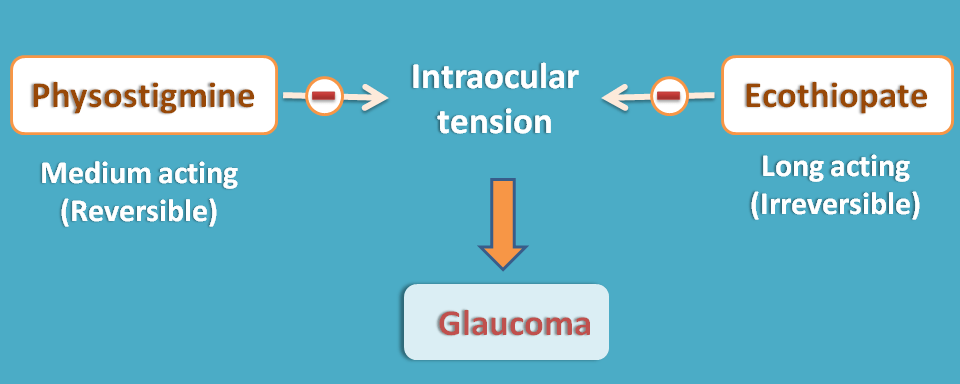
Ecothiopate is another drug but it is long acting than physostigmine.
Diagnosis of myasthenia gravis
Myasthenia gravis is an autoimmune disorder with muscle weakness as the important symptom.
A quick test for the diagnosis of myasthenia gravis is edrphonium test. An injection of edrophonium is given to patients suspected with myasthenia gravis. If it improves muscle strength for a short period after the injection, myasthenia gravis may be present.
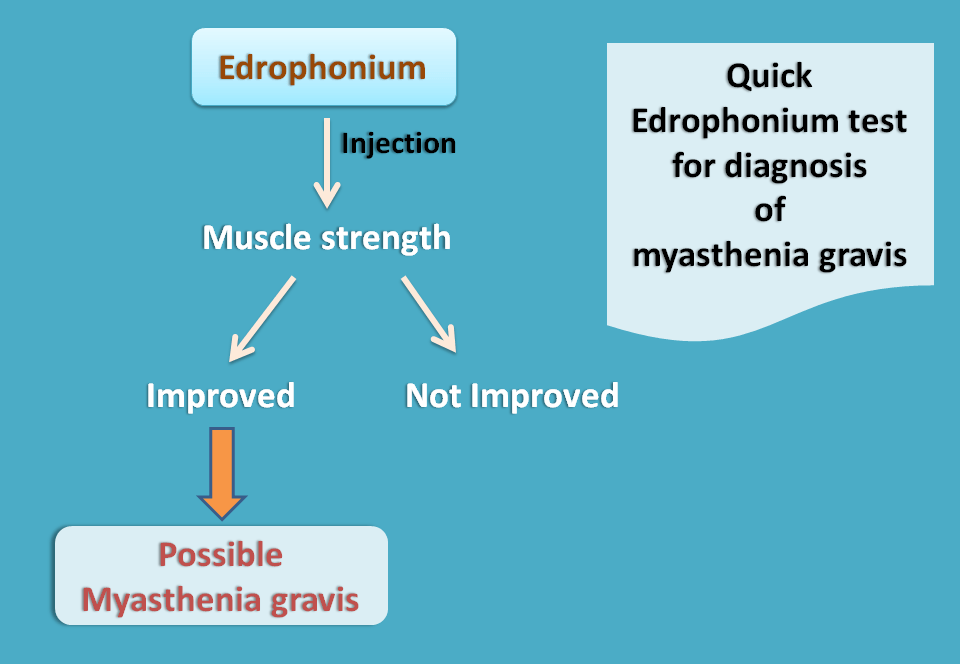
Edrophonium is a short acting agent work for around 10 min hence used only for diagnosis.
Treatment of myasthenia gravis
Acetylcholinesterase inhibitors increase acetylcholine levels neuromuscular junction thereby increase the binding and activation of nicotinic acetylcholine receptors improving muscle contraction and hence muscle strength.
Neostigmine is more selective for nicotinic receptors hence indicated for myasthenia gravis.
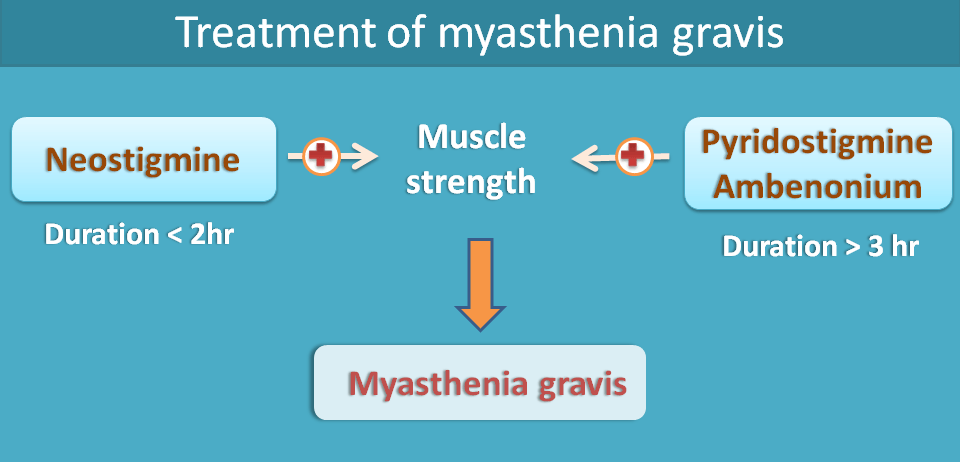
Pyridostigmine and ambenonium are also work like neostigmine hence indicated in myasthenia gravis but a little longer acting.
Atropine poisoning
Atropine is non-selective muscarinic antagonist but luckily competitive. The antagonism produced by atropine can be reversed by any cholinergic agonists.
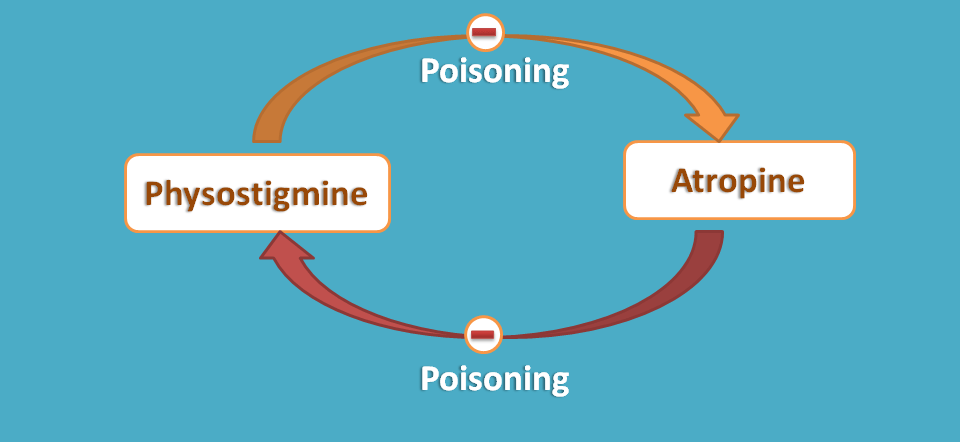
Physostimgine, as more selective for muscarinic receptors, is used for atropine poisoning.
Neuromuscular blocker poisoning
This is another use similar to what we discussed above but this time it is on nicotinic receptors at neuromuscular junction.
Non-depolarising neuromuscular blockers act as antagonists on nicotinic acetylcholine receptors at neuromuscular junction. The block produced by these drugs can be reversed by acetylcholinesterase inhibitors.
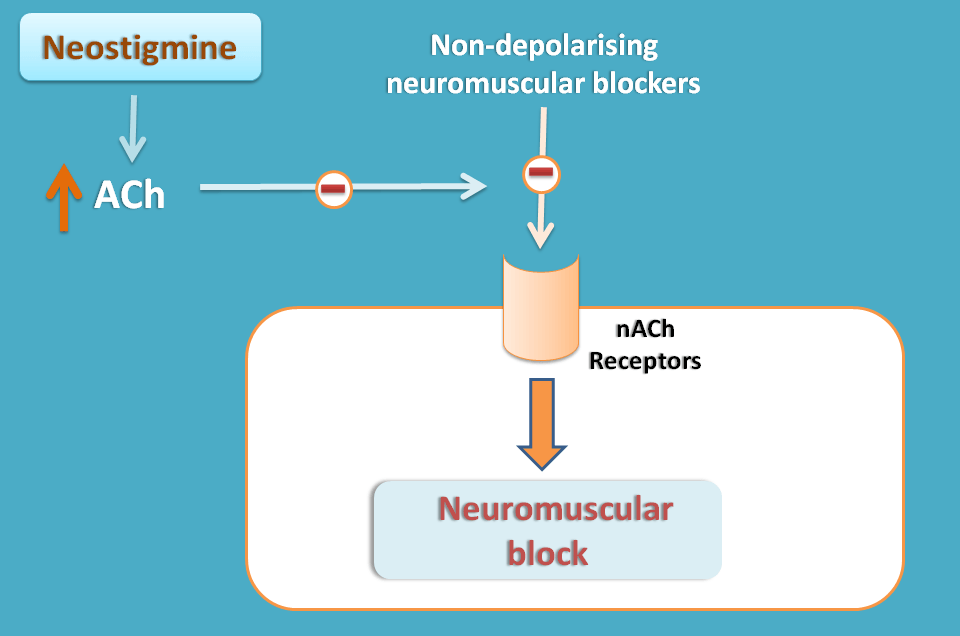
Neostigmine is specifically used for this purpose as it is more selective for nicotinic receptors.
Alzheimer’s disease
Alzheimer’s disease is an age related neurodegenerative disorder associated with progressive loss of memory mainly found in elder patients. Loss of cholinergic fibers is one of the main reason in the pathogenesis of this disease.
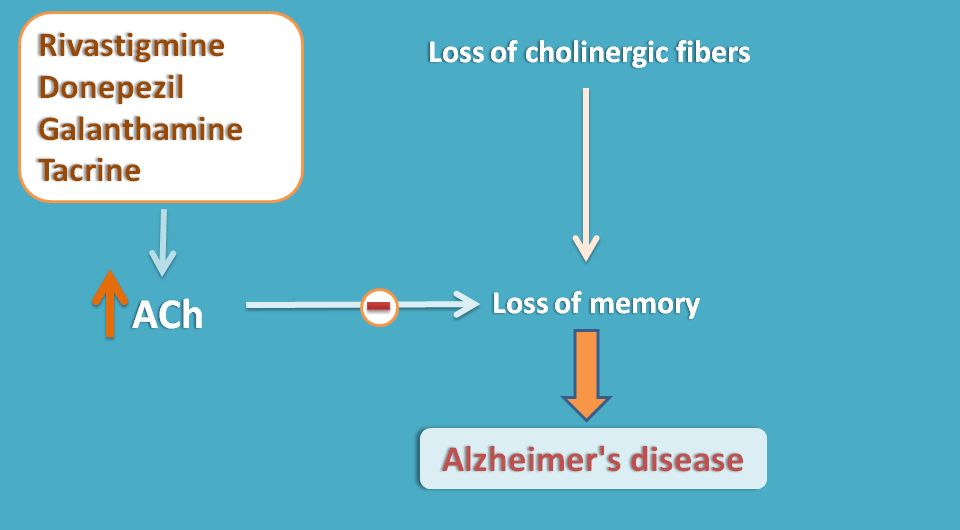
Acetylcholine esterase inhibitors increase ACh levels hence increase cholinergic transmission and improve the memory in these patients.
As it is a central disorder, peripherally acing drugs are not used instead centrally acting drugs like rivastigmine, donepezil and galanthamine are used.